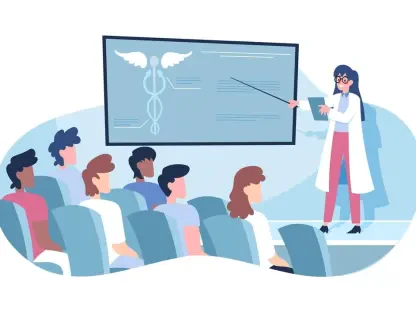The Subject of the Investigation
The modern digital landscape has revolutionized various sectors, enhancing consumer experiences in retail, travel, and hospitality. However, healthcare insurance remains ensnared in perplexing procedures and ambiguity. This investigation delves into the pressing issue of healthcare insurance transparency, exploring whether technology can ameliorate this systemic problem.
The Issue and Its Significance
The lack of transparency in healthcare insurance is more than an inconvenience; it profoundly affects patient outcomes and the healthcare system. Patients often encounter difficulties in understanding insurance coverage, leading to delays in diagnosis and treatment and exacerbating financial stress. The opaque nature of healthcare billing systems creates an environment where the costs are unpredictable, impacting timely access to care. Addressing transparency issues is paramount for ensuring patients receive the care they need without financial surprises.
Detailed Findings
Consumer Convenience in Other Industries
In today’s digital era, consumers enjoy streamlined experiences in several sectors. From ordering groceries and booking travel to reserving accommodations, the process is defined by instant access to prices and services, enabling informed and timely decisions. The immediate confirmation in these industries stands in stark contrast to the convoluted healthcare system, where clarity is remarkably absent.
The Opaque Healthcare System
Healthcare consumers grapple with complex insurance terms, vague coverage details, and unexpected costs. Unlike other industries, healthcare insurance is marred by confusion, with seventy-seven percent of Americans struggling to understand basic insurance terms. This opacity leads to significant anxiety and financial stress, adversely affecting health outcomes for countless patients. Insurance complications result in network mismatches and claim denials, disrupting necessary care and deterring timely medical intervention.
The Necessity of Digital Transformation
Efforts to digitize healthcare processes have been woefully insufficient. True transformation requires more than just digitization; it demands consumer-centric designs that deliver real-time insurance verification and clear cost estimates. Adopting automated systems akin to those in travel and retail industries could help address uncertainties surrounding healthcare costs and improve the overall patient experience.
Implementation Challenges
Several factors complicate the implementation of transparent healthcare systems. Provider-payer contracts are intricate, and many revenue cycle systems are outdated, necessitating manual interventions. As a result, timely verification of insurance details becomes challenging, increasing the risk of claim denials and exacerbating patient stress.
Legislative Efforts and Their Shortcomings
Legislative measures like the 2021 Hospital Price Transparency Rule intended to improve clarity have been inadequate due to poor enforcement and limited compliance. The system’s architecture, designed to be opaque, further complicates transparency. Confidentiality clauses, varying provider-payer contracts, and non-standard, machine-readable data formats require specialized expertise, creating an environment where transparency remains elusive.
Potential Technological Solutions
Leveraging AI and Intelligent Automation
Emerging technologies such as Artificial Intelligence (AI) and intelligent automation offer the potential to enhance transparency. Real-time API calls can verify insurance benefits and explain coverage in simple terms during the patient intake process. Companies like Cedar, Phreesia, and Health Harbor have successfully integrated intelligent automation with user-friendly designs, improving patient engagement and operational efficiency.
Example of Successful Implementations
These companies serve as blueprints for broader industry adoption. AI agents can handle peak periods more efficiently than human staff, consistently providing clear explanations and aiding patients in understanding their insurance coverage. Integrating these technologies into scheduling systems can streamline operations, reduce patient anxiety, and enhance trust in healthcare services.
Policy Changes and Standardization
Necessity for Robust Enforcement
Policy changes are crucial for achieving genuine transparency. Effective enforcement mechanisms such as regular audits, public benchmarks, and substantial penalties for non-compliance can incentivize both insurers and providers to maintain transparency standards.
Simplifying Cost Understanding
A standardized pricing format, similar to a nutrition label, can demystify healthcare costs for patients. Clear and upfront knowledge of coverage and expenses can prevent unexpected bills and foster a more trusting relationship between patients and the healthcare system.
Summarizing the Findings and Next Steps
Our investigation reveals that the current lack of healthcare insurance transparency significantly impacts patients and the broader healthcare ecosystem. Embracing AI and automation, combined with consumer-friendly designs, can address many of these challenges. Furthermore, robust policy enforcement and standardization are crucial to achieving true transparency.
Moving forward, the healthcare industry must adopt real-time, automated systems, initiating small changes that progressively lead to greater efficiency and transparency. By treating healthcare as a critical consumer decision, emphasizing trust, clarity, and openness, the sector can better serve patients and improve overall health outcomes.









